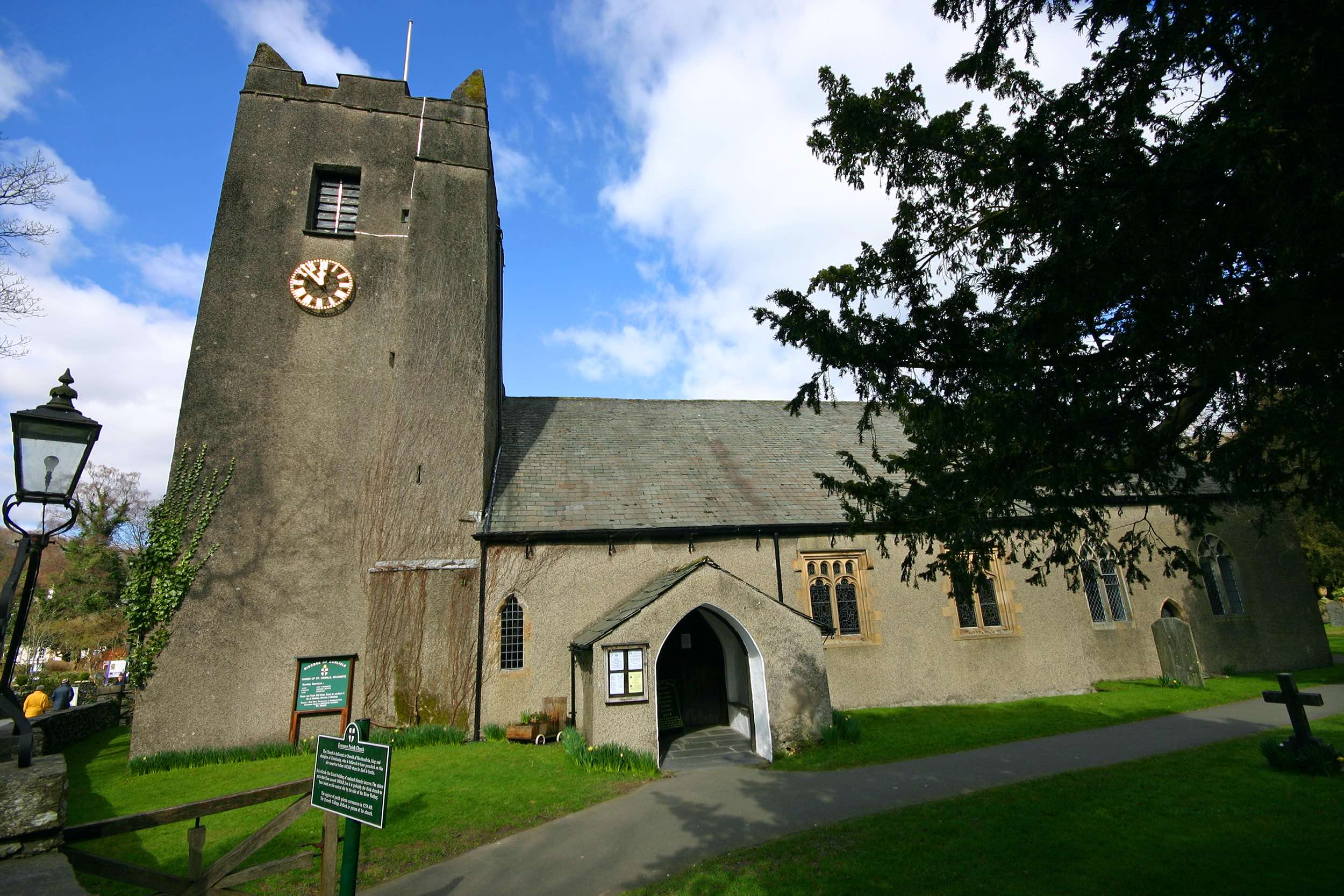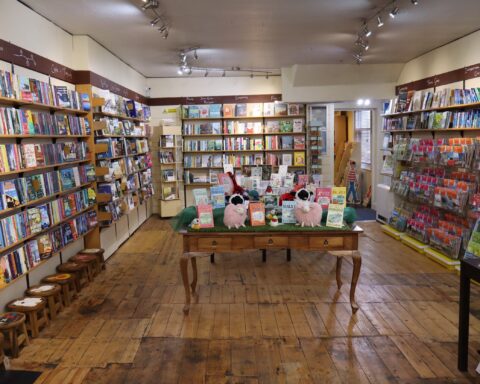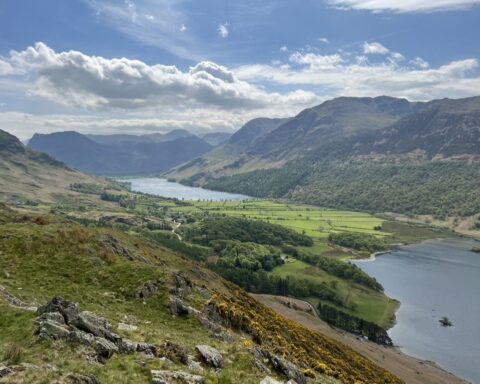St Oswald’s Church is another Grasmere site that is closely associated with William Wordsworth, and one to which fans of the Romantic poet still flock – largely because he and several members of his family are buried in the churchyard. Wordsworth died on April 23, 1850, just a couple of weeks after his 80th birthday and shares a simple headstone with his wife Mary who survived him by nine years. His children Dora, William, Thomas and Catherine are buried nearby as are his sister Dorothy and various other members of the family. Hartley, the son of his close friend and fellow poet Samuel Taylor Coleridge is also buried in the churchyard.
Inside the church, Wordsworth’s prayer book is contained in a glass case near the organ. The memorial stone above the stalls was created by the pre-Raphaelite sculptor Thomas Woolner. Originally intended for Poets’ Corner in Westminster Abbey, it is made from marble and includes Wordsworth’s profile in relief.
Parts of the church, including the south aisle of the nave, date from the thirteenth century, although it was built on an even earlier religious site established by Saint Oswald, the seventh-century King of Northumbria who helped spread Christianity across northern England.
In August every year, the church holds a rush-bearing festival. This dates back to the time when the church had a soil floor which had to be strewn with rushes. Every year, the old rushes would’ve been removed and replaced with fresh ones. Although the floor was laid with flagstones in the 1840s, the custom continues today with an annual procession of local children through the village led by a band. Similar ceremonies take place in four other Cumbrian villages – Ambleside, Urswick, Great Musgrave and Warcop.





